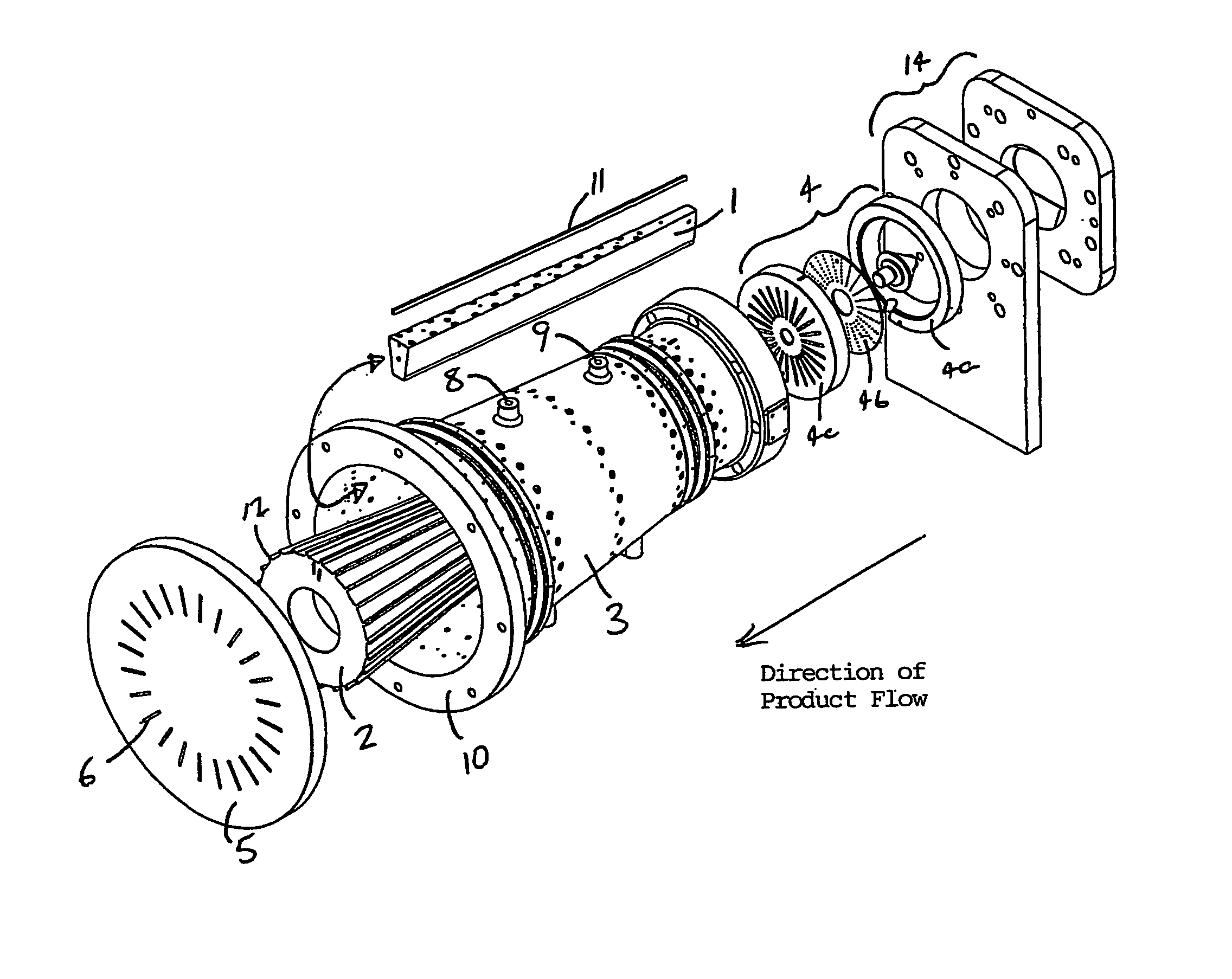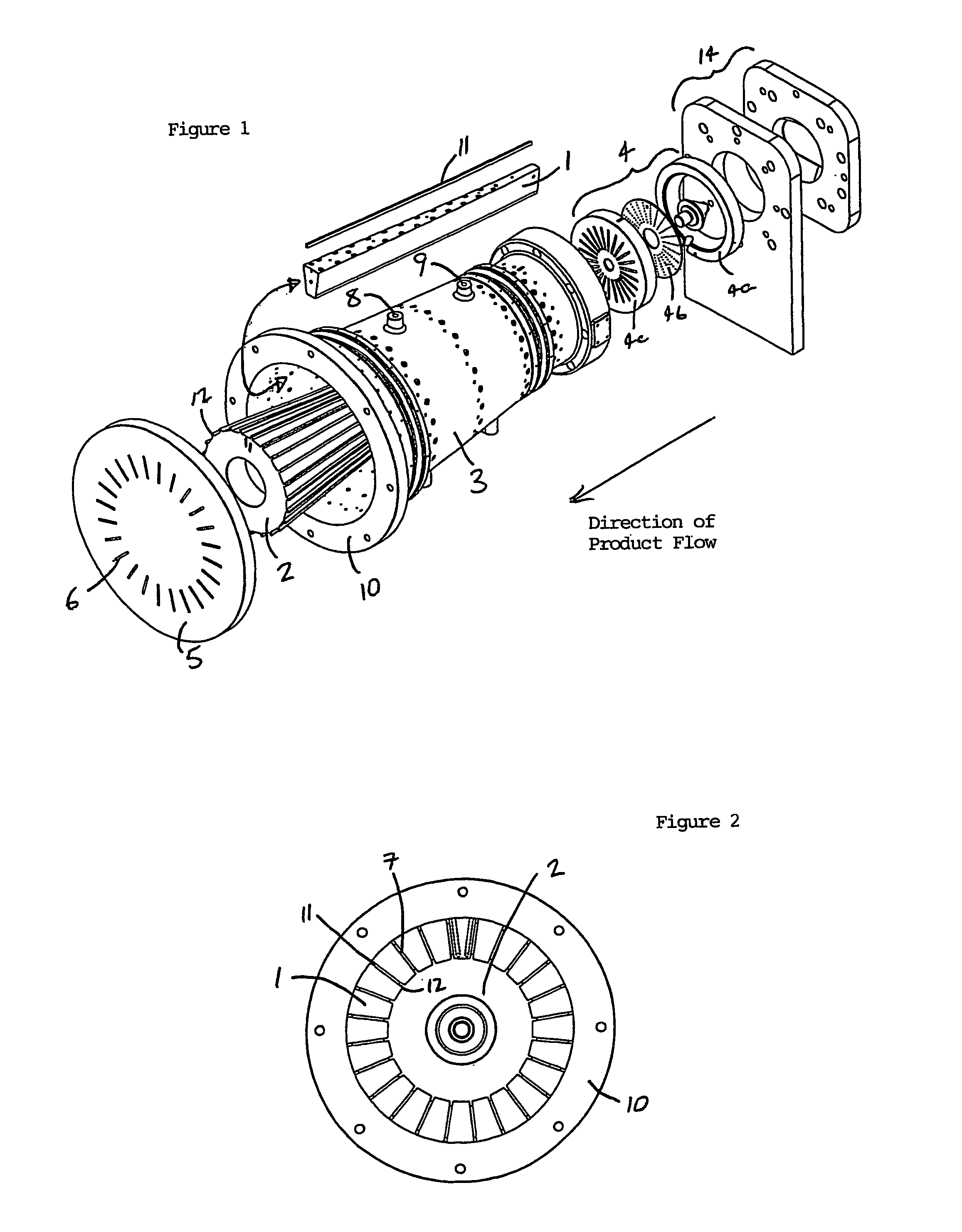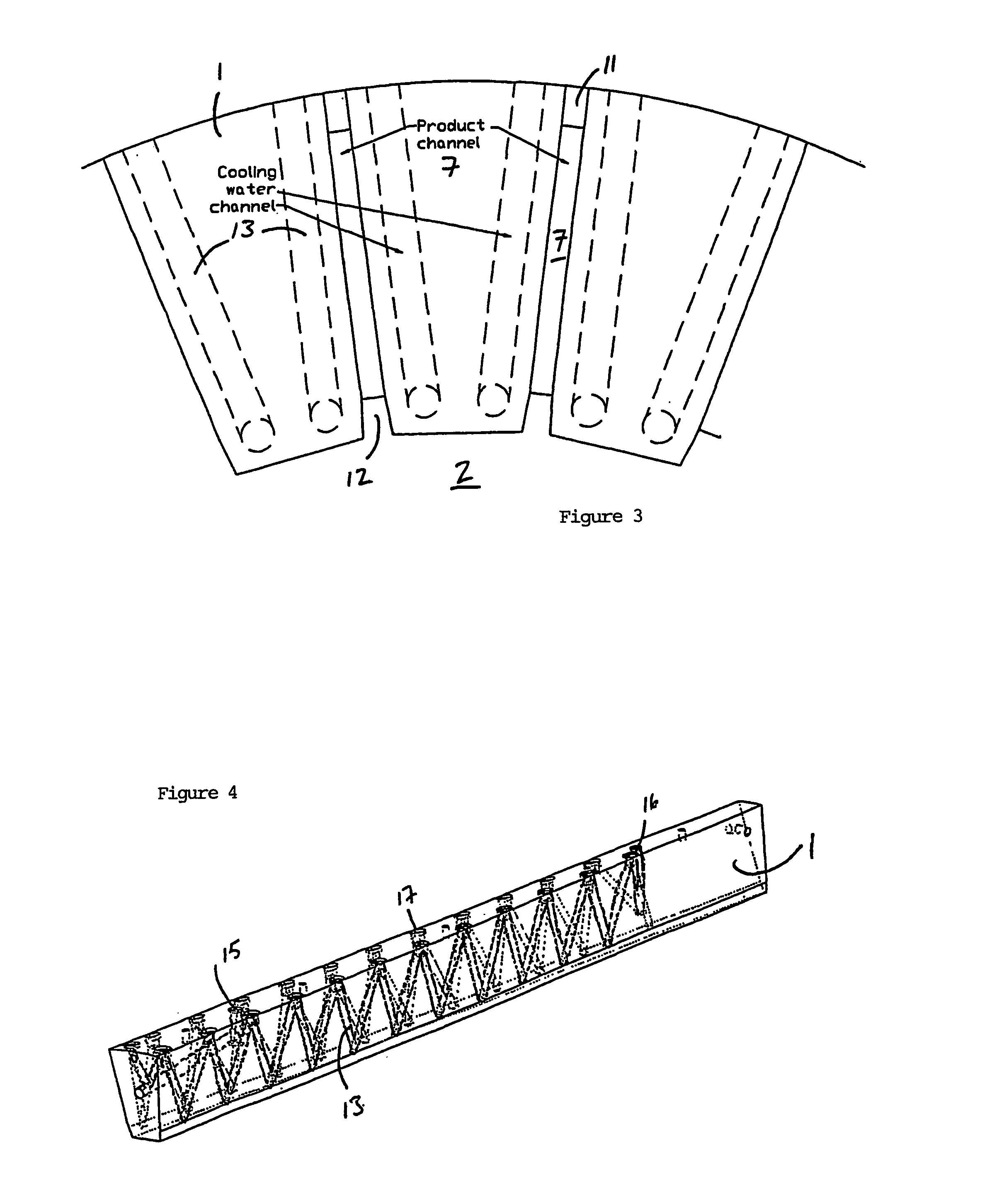Multi-channel cooling die
a cooling die and multi-channel technology, applied in the field of cooling dies, can solve the problems of increasing the likelihood of inconsistencies arising in food product and structure blockages, increasing the area or floor space, and increasing costs, so as to reduce the average distance of extruder flow paths, reduce operational downtime, and reduce product path length variation.
- Summary
- Abstract
- Description
- Claims
- Application Information
AI Technical Summary
Benefits of technology
Problems solved by technology
Method used
Image
Examples
Embodiment Construction
[0048]In order to produce extruded food products, such as fibrous meat analogues, one requires an extruder with the ability to impart shear and pressure on the ingredient formulation and convey said material to the cooling die. The extruder may contain one or more screws. These are well known and will not be described here.
[0049]A cooling die assembly, in accordance with the invention, for use at the delivery end of a high moisture proteinaceous food extruder, is shown in an exploded isometric view in FIG. 1. The die assembly essentially comprises a multi-piece die body consisting of a plurality of cooling wedges 1 that are arranged radially around a central core 2. This arrangement is encased within a tubular restraining sheath 3. Extrudate flow is directed into the inlet end of the die from the extruder via a flow distribution device 4, consisting of a diverging cone 4a, a holeplate 4b and a slotted plate 4c. The distribution device 4 is designed to ensure even extrudate flow into...
PUM
| Property | Measurement | Unit |
|---|---|---|
| temperature | aaaaa | aaaaa |
| length | aaaaa | aaaaa |
| width | aaaaa | aaaaa |
Abstract
Description
Claims
Application Information
 Login to View More
Login to View More - R&D
- Intellectual Property
- Life Sciences
- Materials
- Tech Scout
- Unparalleled Data Quality
- Higher Quality Content
- 60% Fewer Hallucinations
Browse by: Latest US Patents, China's latest patents, Technical Efficacy Thesaurus, Application Domain, Technology Topic, Popular Technical Reports.
© 2025 PatSnap. All rights reserved.Legal|Privacy policy|Modern Slavery Act Transparency Statement|Sitemap|About US| Contact US: help@patsnap.com



